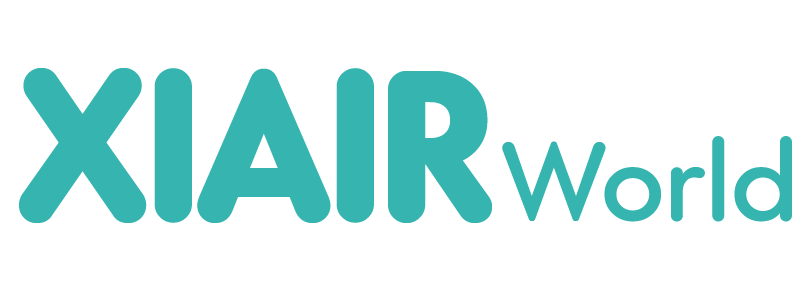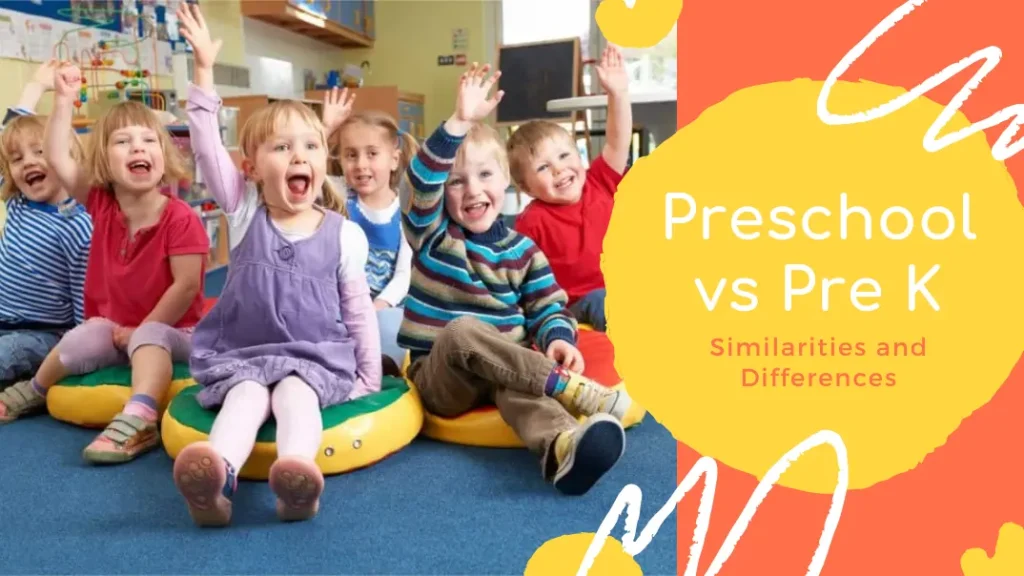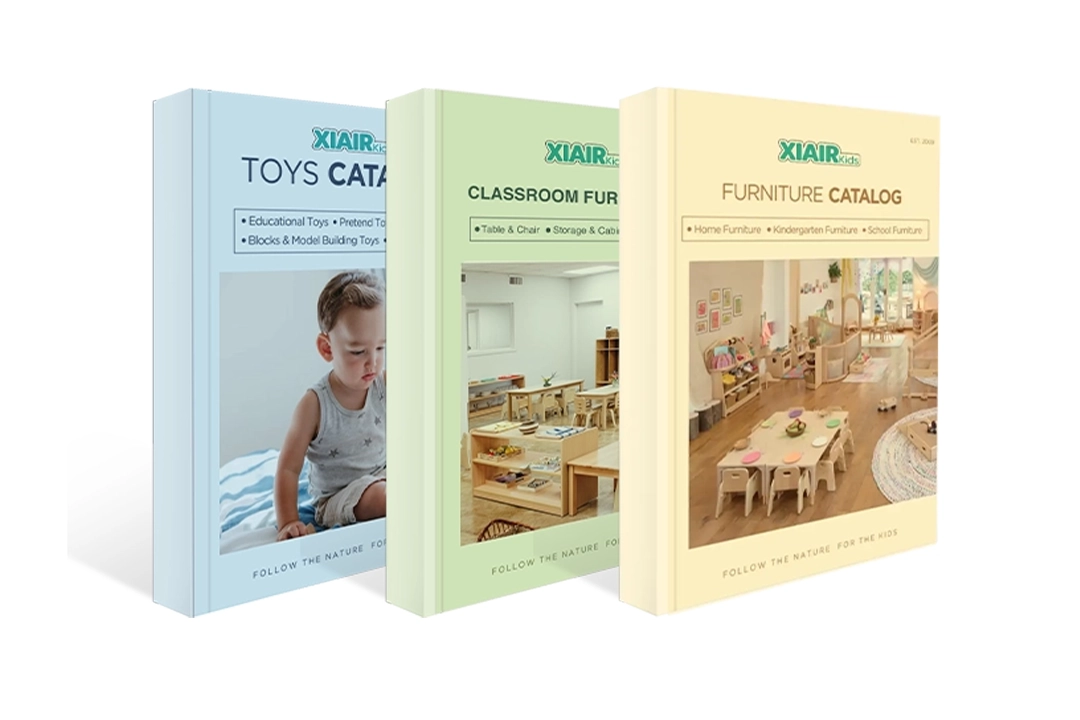What’s the difference between Preschool vs Pre K? Are they the same thing, or do they serve different educational purposes for young children? As parents and educators, it’s crucial to understand these distinctions to make informed decisions about early childhood education.
Preschool vs Pre K are often used interchangeably, but they aren’t the same. Preschool generally refers to early childhood education for children aged 3-4, while Pre-K (Pre-Kindergarten) is typically for children aged 4-5. Both aim to prepare kids for kindergarten, but Pre-K tends to have a stronger academic focus.
Understanding the differences between these two can help you choose the best early education path for your child. Let’s dive into the details.
ما هي مرحلة ما قبل المدرسة؟
Preschool is an early childhood education program designed for children aged 3 to 4 years. The focus is on socialization, learning through play, and preparing children for kindergarten in a more relaxed and flexible environment. While the primary objective is not strictly academic, preschool introduces foundational concepts such as colors, shapes, and numbers, encouraging creativity and curiosity through hands-on activities and group play. The curriculum emphasizes the development of basic social skills and emotional intelligence, helping children interact with their peers in a classroom setting.
What is Pre-K?
Pre-K, or Pre-Kindergarten, serves children aged 4 to 5 years, focusing on more structured learning experiences in preparation for kindergarten. It provides a more academic environment compared to preschool, with specific learning goals in reading, writing, math, and sometimes science. Pre-K programs are typically designed to give children the skills needed to succeed academically in the upcoming school year, such as recognizing letters, counting, and following instructions. The curriculum in Pre-K is more targeted at ensuring children are “kindergarten-ready,” and it may include assessments to track progress.
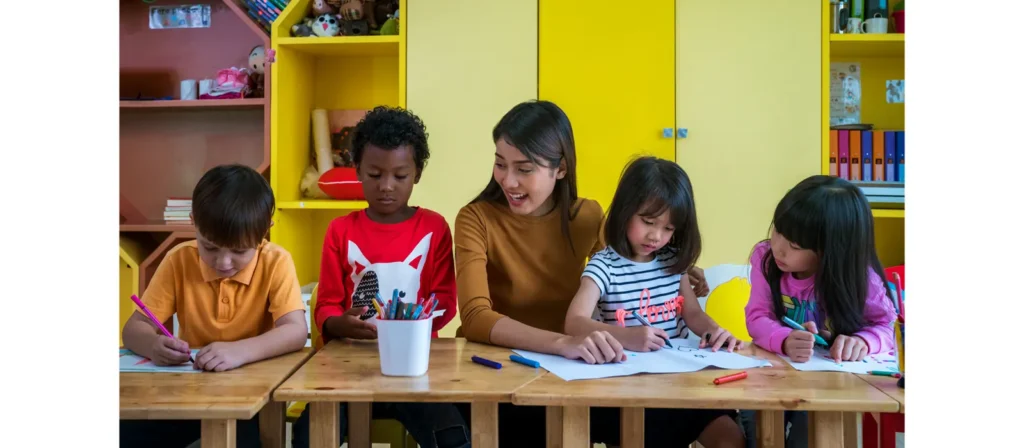
What are the Similarities Between Preschool and Pre K?
Though Preschool vs Pre-K are different in many ways, they do share some fundamental similarities that are crucial for a child’s early development.
طرق التدريس
Both preschool and Pre K use teaching methods that are primarily play-based and child-centered. These programs focus on fostering a love for learning through engaging activities, games, and socialization. While the level of academic rigor may differ, both programs prioritize creating a fun and engaging environment that promotes cognitive and emotional growth.
Social-Emotional Growth
تطوير social-emotional skills is a primary focus in preschool or Pre-K. Both programs encourage children to interact with their peers, learn to share, take turns, and resolve conflicts. Preschool nurtures these skills through less structured play and guided interaction, while Pre-K takes a more focused approach to preparing children for group settings in kindergarten. Teachers may use structured activities like circle time or group projects to foster communication, empathy, and emotional regulation.
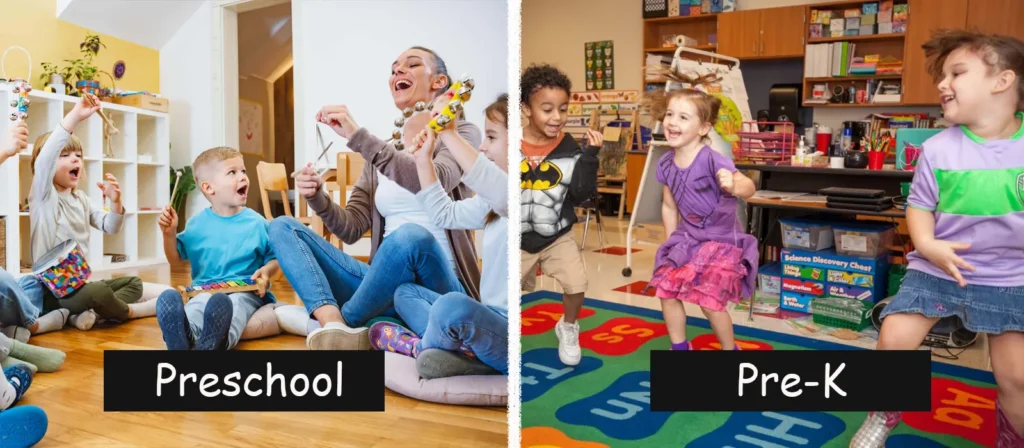
What is the Difference Between Preschool and Pre K?
Understanding the fundamental differences between Preschool and pre-K can help you decide which program is right for your child.
Preschool vs Pre K: Age Difference
The most obvious difference between preschool and Pre K lies in the age of the children. Preschool is for younger children, typically ages 3 to 4, while Pre-K targets children who are 4 to 5 years old. As children approach kindergarten age, Pre K offers more academic rigor and prepares them for the challenges of formal schooling, whereas preschool focuses more on socialization and basic developmental milestones.
Preschool vs Pre K: Curriculum Focus
ال منهج ما قبل المدرسة is generally less academic and more geared toward social and emotional development. It is more about learning through play, exploration, and essential early concepts like shapes, colors, and numbers. In contrast, Pre K introduces more structured literacy, numeracy, and problem-solving lessons to ensure that children are academically prepared for kindergarten. The academic rigor is higher in Pre K, and the focus shifts to ensuring children understand foundational skills necessary for success in formal schooling.
لا تحلم فقط، بل صممه! دعنا نتحدث عن احتياجاتك من الأثاث المخصص!
Preschool vs Pre K: Curriculum Length
Preschool programs tend to be shorter, with some offering only a few hours daily. Pre K programs are typically longer and may run for a full day, much like kindergarten. Pre K also tends to be more structured in terms of time, with specific periods allocated to different subjects like math, reading, and play, ensuring that children are exposed to various learning experiences.
Preschool vs Pre K: Classroom Setup
In preschool, classrooms are designed to encourage free play and exploration, often featuring open spaces with different activity stations. Children can choose from various مواد تعليمية to engage in individual or group play. Pre-K’s classroom layout is more structured, with dedicated areas for specific subjects. For example, there might be a reading corner, a math center, and a creative arts area. This setup encourages a more focused learning environment, with activities aligned to academic objectives.
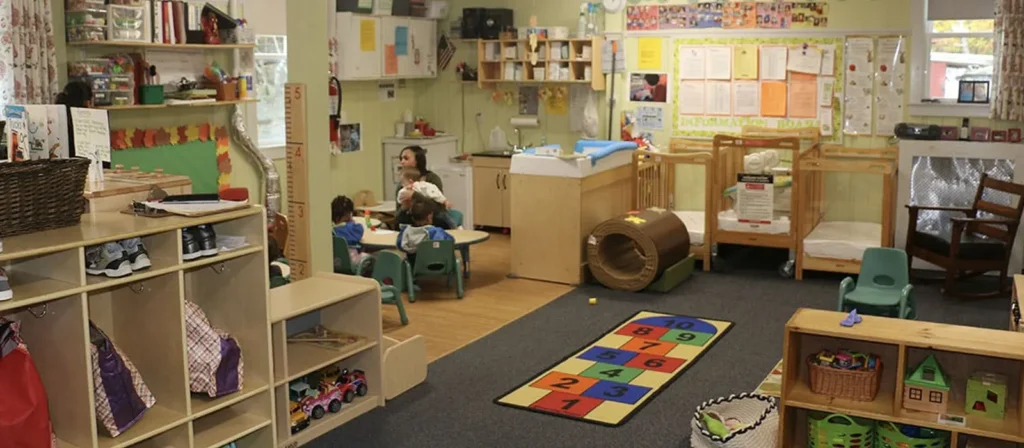
Preschool vs Pre K: School Readiness
Pre K is specifically designed to promote school readiness. While preschool fosters social and emotional growth, Pre-K prepares children for the formal structure of kindergarten. Pre K students are expected to follow more rules, sit for longer periods, and engage in lessons that teach them the basic skills they need for kindergarten success. Preschool focuses more on developing foundational skills like listening, sharing, and following simple instructions.
Preschool vs Pre K: Cost
The cost of preschool vs Pre-K can vary based on location and the type of program. Preschool is often available at private childcare centers, and prices can range widely, with some programs offering part-time enrollment. Pre K programs, however, are frequently offered as part of the public education system in many regions and may be free or have a minimal cost for families. In areas where Pre-K is not publicly funded, it can be more expensive than preschool.
لا تحلم فقط، بل صممه! دعنا نتحدث عن احتياجاتك من الأثاث المخصص!
Preschool vs Pre K: Learning Style
The learning style in preschool is generally more relaxed, emphasizing play, creativity, and exploration. Pre-K, on the other hand, focuses on preparing children for the more structured and academic environment of kindergarten. While both preschool and Pre K involve learning through play, Pre K incorporates more structured lessons and learning goals, ensuring that children are ready for academic success.
The Role of Preschool and Pre-K in Children’s Educational Development
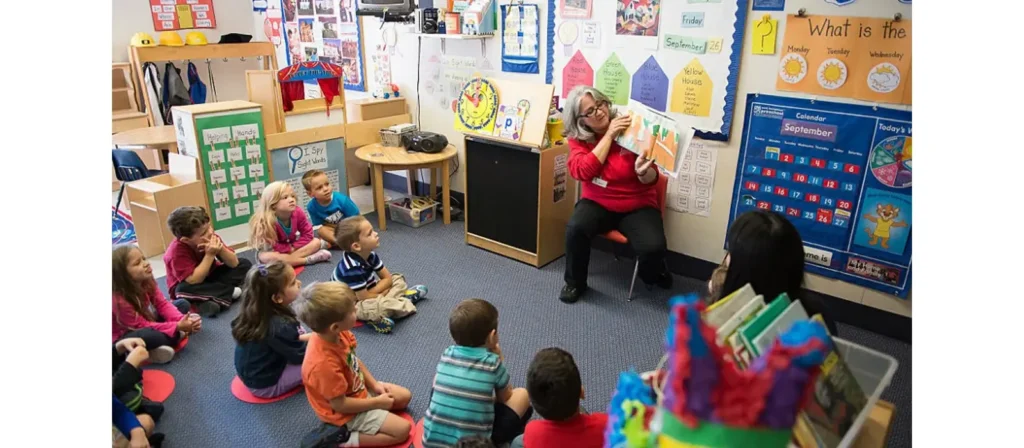
Fun Learning Experience
Both preschool and Pre K offer fun learning experiences, but they differ in their approach. Preschool tends to focus more on exploratory learning through play, allowing children to learn through their natural curiosity. Pre-K, while still incorporating fun activities, adds a layer of academic focus to ensure children are ready for the more structured learning environment of kindergarten.
التطور الاجتماعي والعاطفي
Preschool and Pre-K offer opportunities for children to grow socially and emotionally. They help children develop the skills to interact with others, understand and manage their feelings, and build friendships. These programs also promote independence, which helps children develop confidence and self-esteem.
التطور المعرفي
Both preschool and Pre K contribute to children’s cognitive development. Preschool focuses on foundational cognitive skills through play-based activities, while Pre-K builds on this by introducing more academic content, such as early literacy and numeracy. This progression helps children develop the cognitive skills necessary for future academic success.
لا تحلم فقط، بل صممه! دعنا نتحدث عن احتياجاتك من الأثاث المخصص!
Independence and Confidence
Pre K programs often focus on helping children build independence and confidence by encouraging them to take on more responsibilities in a structured environment. Preschool encourages independence as well, but the activities tend to be more exploratory, and children may have more freedom to choose their activities.
الاستعداد الأكاديمي
One of the primary goals of Pre-K is to ensure academic readiness for kindergarten. Pre-K programs focus on helping children develop the academic skills they will need, including recognizing letters and numbers, learning to write their names, and following structured lessons. Preschool, while it does introduce basic concepts, is more focused on socialization and emotional growth.
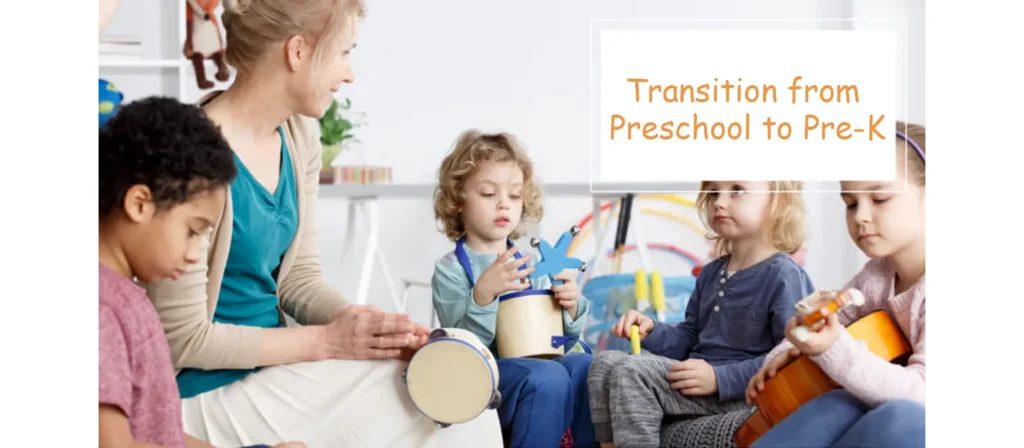
Transition from Preschool to Pre-K
The transition from preschool to Pre-K is a major step for children. Preschool environments are typically more play-based, while Pre-K programs often incorporate a more structured academic approach. This shift can be both exciting and challenging for children, so it’s important to prepare them for this new phase.
What to Expect in Pre-K
Pre-K is more formal than preschool, with a focus on kindergarten readiness. Children begin to work on early literacy skills, basic math, and social-emotional development. They will learn to follow directions, take part in group activities, and experience more school-like routines.
Making the Transition Smooth
Preparing your child for Pre-K involves introducing more structure into their daily routine. This might include setting regular bedtime schedules, reinforcing basic academic concepts at home (like the alphabet or numbers), and helping them practice independent tasks like putting on shoes or using the bathroom alone.
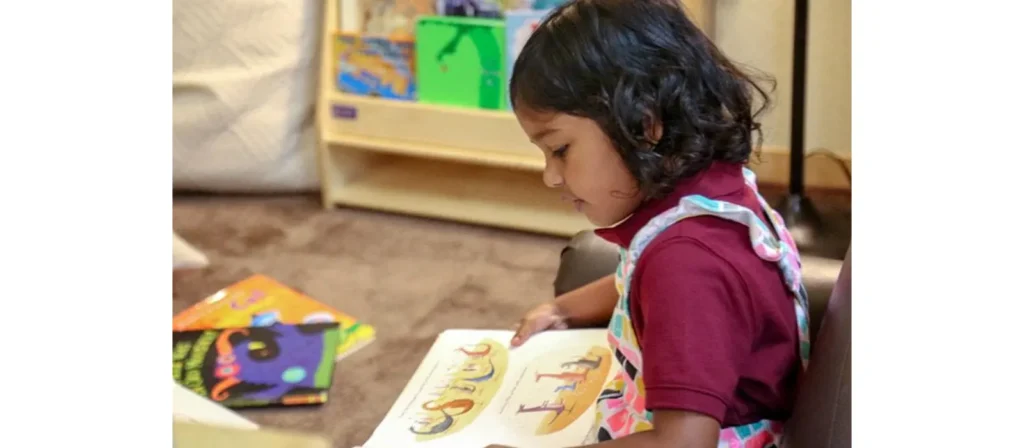
How to Tell if Your Child is Ready for Preschool
Every child develops at their own pace, and determining readiness for preschool involves observing their developmental milestones. Preschool readiness is not just about age, but about cognitive, emotional, and social maturity.
Signs of Readiness
A child may be ready for preschool if they show interest in playing with other children, can follow basic directions, and have started to engage in activities that require sharing or waiting their turn. Emotional readiness is also important—can they manage frustration or separation from parents for short periods?
Self-Sufficiency Skills
Children who are ready for preschool will show early signs of independence, such as being able to dress themselves or wash their hands without needing constant assistance. These small steps indicate that your child is becoming more self-sufficient and ready for a preschool environment.
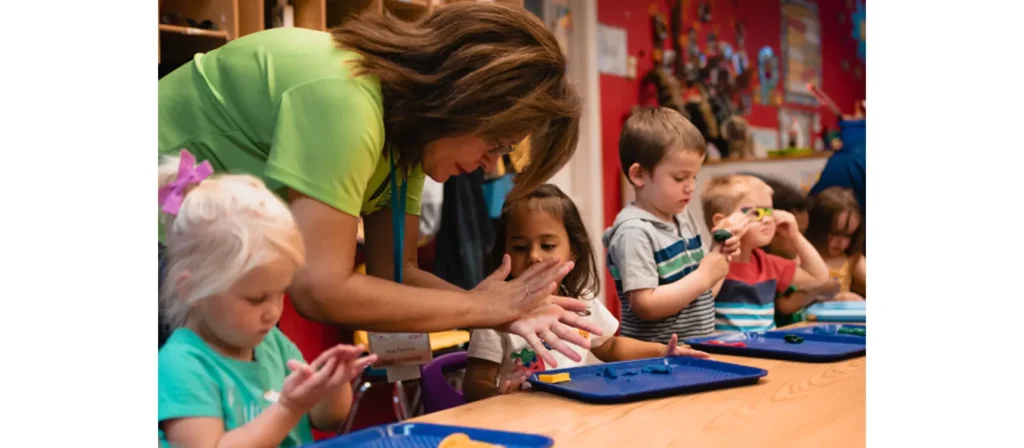
The Importance of Early Education
Early education plays a critical role in a child’s overall development. Research has shown that children who attend Preschool and Pre-K programs tend to perform better academically in later years. But the benefits don’t stop at academics. Early education programs also provide opportunities for children to develop social skills, emotional intelligence, and self-regulation.
“The foundation laid in early education programs provides children with the tools they need to navigate the more structured environment of elementary school, setting them up for academic and social success.”
لا تحلم فقط، بل صممه! دعنا نتحدث عن احتياجاتك من الأثاث المخصص!
Making the Right Choice: Preschool or Pre K?
When deciding between preschool and Pre-K, there are a few key factors to consider. The primary consideration should be your child’s age, developmental stage, and readiness for academic learning. Preschool is a good fit for younger children (ages 3 to 4) who need time to develop social skills and emotional regulation. Pre-K, on the other hand, is a great choice for children closer to kindergarten age (ages 4 to 5), especially if they are ready for more structured learning and academic preparation.
Another important factor is your family’s educational goals. If you want your child to be well-prepared for kindergarten, Pre-K may be the better option, as it focuses more on foundational academic skills like reading, writing, and math. However, if your priority is providing your child with a nurturing environment to develop social skills and emotional intelligence, preschool may be the better choice.
خاتمة
Understanding the differences between Preschool vs Pre K can help you make a better decision for your child’s early education. While both options offer valuable learning experiences, choosing the right program depends on your child’s age, developmental stage, and readiness for formal schooling. Ultimately, both preschool and Pre-K provide a foundation that will help your child succeed in kindergarten and beyond.
الأسئلة الشائعة
- What age is appropriate for preschool?
Preschool is typically for children aged 3 to 4, while Pre-K is for children aged 4 to 5. - Do I need to choose between preschool and Pre-K?
If your child is around 3 or 4, preschool is often the first choice. Pre-K is typically considered a precursor to kindergarten. - Is Pre-K the same as kindergarten?
No, Pre-K is for children before kindergarten, designed to prepare them for kindergarten’s more structured learning environment. - Is Pre-K mandatory?
Pre-K is not mandatory in most places, but it can be a valuable tool to prepare children for the transition to kindergarten. - Can my child attend both Preschool and Pre-K?
Yes, some children may attend both, starting with preschool at age 3 and then moving to Pre-K at age 4. However, many programs combine elements of both to ensure children are ready for school. - Which program is better for a child with special needs?
Both preschool and Pre-K can accommodate children with special needs. It’s important to choose a program with the resources and support to meet your child’s specific requirements. - How do I choose the best program for my child?
When choosing between preschool and Pre-K, consider your child’s age, developmental needs, and the type of learning environment you want for them. Visit potential schools, ask about their curricula, and observe their classrooms to find the best fit.
